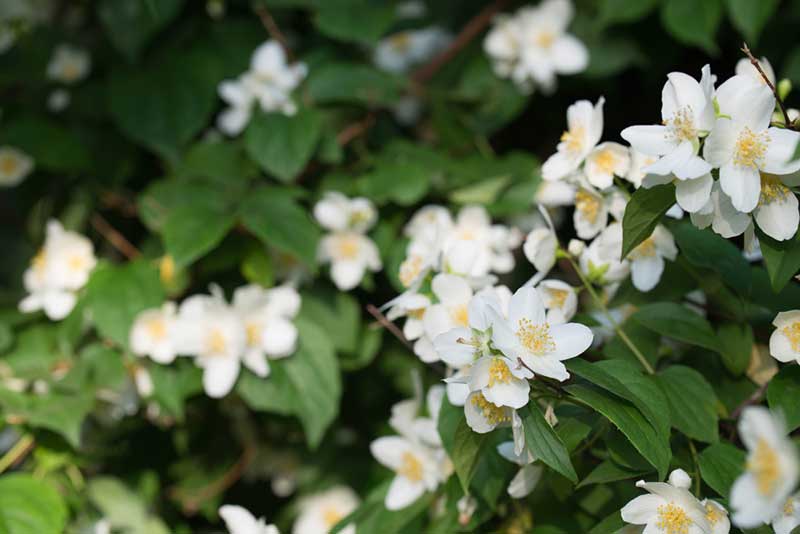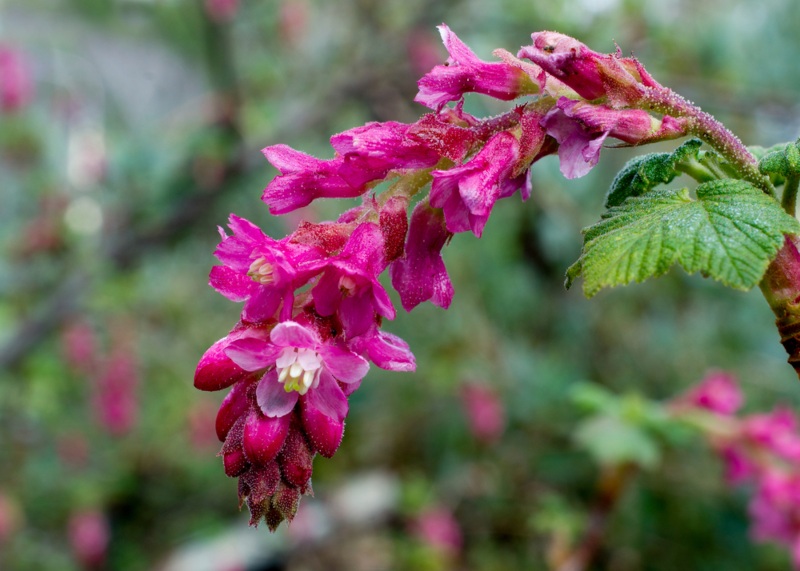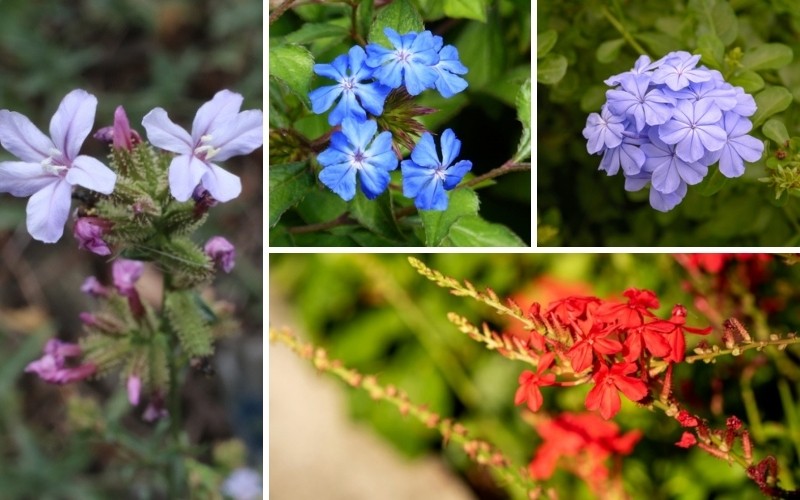
Most yards have areas where any plant there will be exposed to full sun. While that sounds like plant heaven at first, because sunlight is necessary for photosynthesis, too much light along with excessive summer heat can be too harsh for many plants. Whatever goes in those spots in the garden has to tolerate full sun well so that the plants do not end up with discoloration – or worse – from leaf scorch.
Flowering shrubs that tolerate full sun often also like partial sun, so you literally have room to play with. Look for native plants, especially, but some non-natives from other regions with similar climates can be just as fun to grow.
Flowering quince (Chaenomeles speciosa)

Lovely clusters of white, pink, orange, and even bright red blossoms that look almost like apple blossoms (which is not surprising, given that quinces are related to apples) cover this moderately big shrub. C. speciosa can grow to up to 10 feet, while other cultivars like C. japonica grow to about 3 feet or so. Flowering quince is an early bloomer and works well when you need spring color in hardiness zones 4-8; some cultivars prefer zones 5-9. It’s very low maintenance and great for gardens that are in need of a wall or long hedge of flowers. It withstands deer, rabbits, and drought.
Weigela (Weigela florida)

Weigela, with its dark green leaves and dark pink, tubelike flowers, forms a striking screen that can reach 10 feet high. This blossoms during late spring and early summer and does well in clay soil. The tubelike flowers, as you’d guess, attract hummingbirds and make this shrub good for pollinator gardens. You may need to prune the shrub after it flowers. It’s good for average soil and needs average water, and it doesn’t have any major pest issues. It’s a great flowering shrub for a low-maintenance garden.
Mock orange (Philadelphus coronarius)

The mock orange (or mockorange) is known for its masses of white flowers and its amazing fragrance. If you want a tall shrub to plant near a window or patio, this is the one. It can reach up to 12 feet and has a tendency to sucker, so you’ll need to be on the lookout unless you want the plant to spread. Powdery mildew, rust, cankers, and leaf spot can affect the mock orange, but it tends to be fairly disease-resistant overall. It tolerates clay and rabbits.
Korean spice viburnum (Viburnum carlesii)

Korean spice (or Koreanspice) viburnum prefers acidic soil, so if you’ve been on a mission to amend all your garden soil to make it more alkaline, save an acidic spot for this shrub. Dark green foliage that turns red in fall plus clusters of pink to red buds that blossom into pale pink and white flowers make this a spectacular hit for much of the year. Cultivar height ranges from 5 to 8 feet. It’s a slow grower and is known for its unique spicelike scent from which it gets its name.
“Peach Lemonade” rose (Rosa radpastel)

If you’re worried that roses may be too high-maintenance for you, take a look at the “Peach Lemonade” rose. This shrub is very hardy (zones 3-9), very disease-resistant, and really easy to grow. You’ll get masses of roses that start out as light yellow and then change to dark pink. The shrub is technically “self-cleaning,” meaning old flowers drop off, but you can deadhead to keep it blossoming for literally months – it’s not unheard of for the shrub to produce flowers in spring, summer, and fall.
Bluebeard (Caryopteris x clandonensis)

Staggering bloom times for your flowering shrubs is a good idea so that you have color for most of the year. Bluebeard produces blossoms in late summer before dropping its leaves and dying back in winter in colder zones. The purplish-blue flowers grow in clusters at the end of spreading stalks, and the plant is a low-grower that’s great for borders. This is a tough shrub that can withstand a lot of summer heat, and pollinators love it. It’s a great shrub for gardens beset by deer as the deer don’t like it.
Coyotebrush (Baccharis pilularis)

Bees benefit from pollinator gardens, and the coyotebrush (also coyote brush and coyote bush) is a great option if you live on the West Coast. This shrub can grow up to 8 feet in a rounded form, but you can find smaller cultivars. The flowers of the coyotebrush are small and white to yellow, and they dot the branches of the shrub. Many bee species as well as moths like the plant. The flowers tend to appear in September and October, the hotter months along the coast and into the coastal mountains.
Chaparral currant (Ribes malvaceum)

The chaparral currant is a drought-tolerant shrub that attracts hummingbirds with its rosy red blossoms. It can sit in full sun or handle up to part shade, and it produces flowers in late fall and winter, making it a lovely addition to gardens with milder winter weather. It can grow to 10 feet tall, and its branches look like they are tumbling out and down. The contrast between the blossoms and leaves is striking. The leaves of some cultivars have a scent.
Angelita daisy (Tetraneuris acaulis)

The toughest full-sun spot for any plant is no doubt the Desert Southwest in summer, with temperatures that soar and not a lot of shade to speak of. The angelita daisy, a small clumping shrub with bright yellow flowers on stalks rising up above the leaves, is native to this environment. These are heat-tolerant, drought-resistant flowers that blossom in spring, summer, and fall. They attract butterflies and like rocky and sandy soil.
Eremophila racemosa

The shrubs in this genus produce flowers of almost all colors, from white to green to purple. There’s even a multicolor version, Eremophila racemosa, whose flowers start out yellow and then turn orange, and later to pink and purple. The shrub has a tumbling appearance and is extremely drought-resistant, able to go without watering for a time. As you might guess, the tubular flowers attract hummingbirds.













